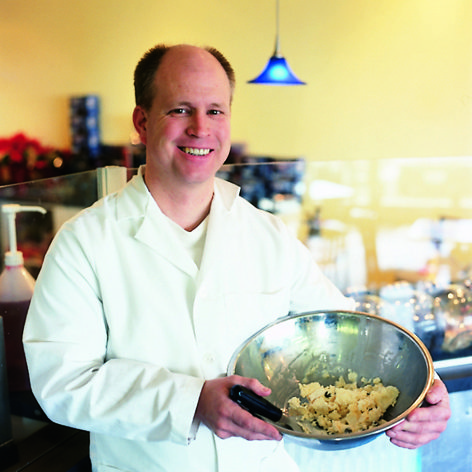By Michael Smart, ’97
PHYSICS
Last year Scott D. Bergeson, ’90, and Justin B. Peatross, ’88, both assistant professors in BYU’s Physics Department, reeled in prestigious CAREER awards from the National Science Foundation.
“These grants create more opportunities for undergraduates to engage in significant, original research,” says Bergeson, who won a $525,000 award spread over five years. “They also give us the opportunity to reinforce and strengthen the reputation of BYU in science.”
Both Bergeson and Peatross use lasers to achieve unique effects on the atomic level—effects that could enhance processes like advanced time-keeping and might improve technologies for etching smaller computer chips.
Bergeson uses lasers to cool atoms to temperatures near absolute zero, in effect halting their usual frenetic motion. “It is sort of like using ping-pong balls to slow a bowling ball,” he explains. “The atoms we are slowing down are relatively heavy, but they eventually succumb to the perpetual bombardment of photons (that make up the laser beam) and stop.”
America’s national standard of time is kept by a clock in Boulder, Colo., that uses laser-cooled atoms. Bergeson’s team plans to build a portable atomic clock that could be 100 times more accurate.
Peatross’ research group has built a laser system that produces light pulses lasting only 25 femtoseconds (25 millionths of a billionth of a second). By concentrating amplified laser energy into such a brief duration, they achieve intensities that are equivalent to taking all of the sunlight striking the earth at any moment and concentrating it on the head of a pin.
“Twenty-five femtoseconds seems awfully brief to a person, but to an atom, it’s a long time,” Peatross says. “A lot of exotic processes can happen.”
One such process converts part of the laser energy into coherent beams of extreme ultraviolet light and X rays, short wavelengths of light important to the semiconductor industry for making smaller features on computer chips.








